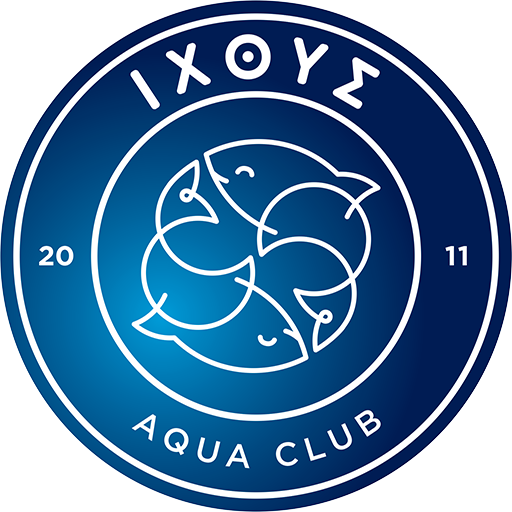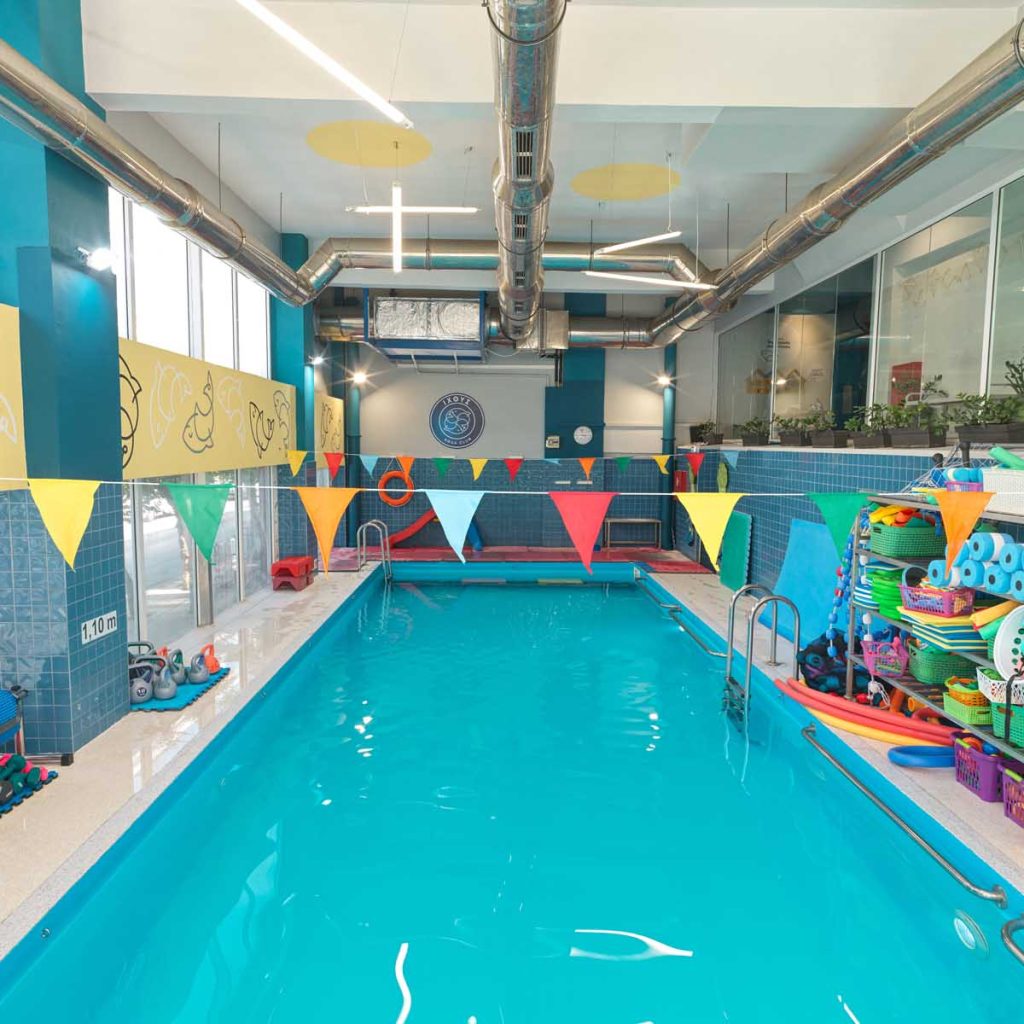PISCES BABY SWIMMING
in Thessaloniki
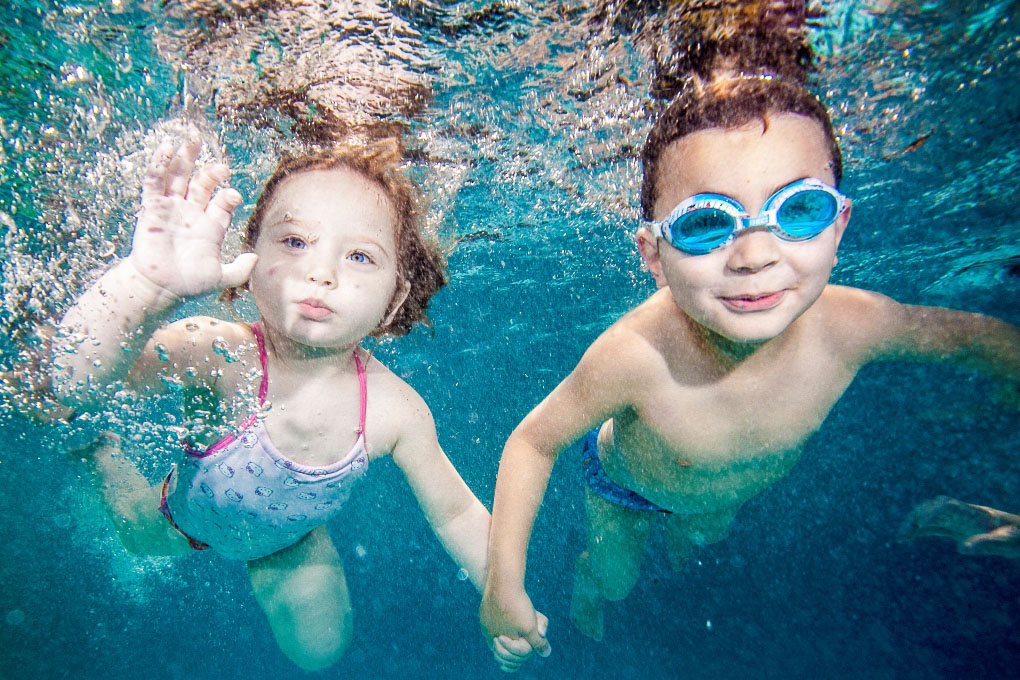
WHAT IS IT?
Baby Swimming is a program of learning and developing skills in water, in the form of play. The program is aimed at parents and infants aged 40 days to 3 years.
The benefits of Baby Swimming are unique!
It is scientifically proven that Baby Swimming strengthens children's physique, their respiratory capacity and heart function. At the same time, their posture and body position are improved. They overcome their fears, gain courage and self-confidence and become more autonomous and social. It is also an opportunity for parents to spend constructive time with their children while, as is known, children who exercise, get sick less!!!
In Ichthys Swimming Pool Kalamaria Miaouli 18. In a sunny and large swimming pool, at 32 degrees Celsius, with basic cleaning of ozone, chlorine in a percentage of drinking water and UV rays in groups of nine!
Registrations take place throughout the year.
We look forward to having you join our team!
THE BENEFITS OF BABY SWIMMING ARE UNIQUE!
- Many children who take infant swimming lessons are able to swim before they can even walk. As their swimming skills improve, you will also notice improved coordination, increased strength and endurance, and a boost in their respiratory system.
- The earlier a child starts infant swimming, the faster they will develop defenses and skills for their absolute safety in the water.
- Gentle and calm exercises in the water will give your child continuous and more restful sleep. Indeed, our parents confess that their babies sleep much better and longer after a comprehensive baby swimming lesson.
- Swimming brings great joy to the lives of toddlers and infants. Children also develop healthier and more dynamic personalities.
- Lessons from an early age help develop self-esteem and independence in the future adult. As a child's ability to move freely in the water increases, so does the child's sense of well-being.
- Parents and children have the opportunity to spend a very productive and enjoyable time together. Especially at this age when few activities are appropriate for the infant. This develops stronger bonds between parent and child. Under the right conditions, cohesion increases both in the family and in society in general.
- Often this activity is their first experience with peers. This way they learn to socialize and interact with each other, while looking forward to the next meeting. Social skills increase by a large percentage, compared to children who do not participate in similar activities. Infant swimming children are more social!
- Parents themselves have the opportunity to socialize with other parents. By extension, to meet people with similar perceptions and common interests. This way, not only the children but also the parents become more socialized.
- Swimming lessons from a young age lay a solid foundation for a life in which the adult will be able to participate in and enjoy a wide variety of water sports, both in and out of the water.

WHERE IS IT HAPPENED?
Baby swimming takes place in the swimming pool. Fish.
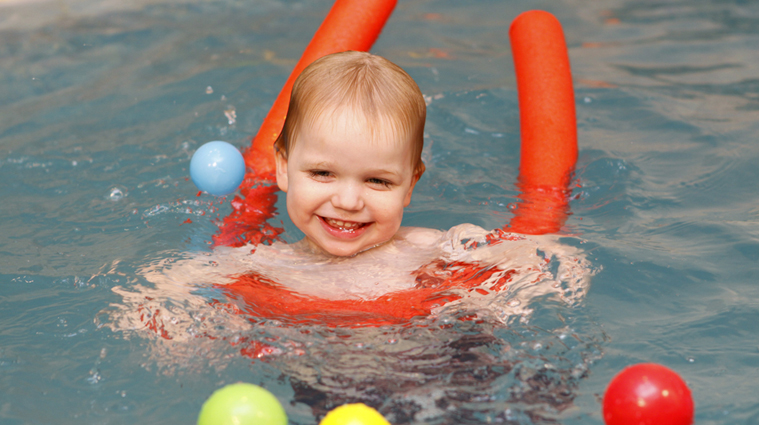
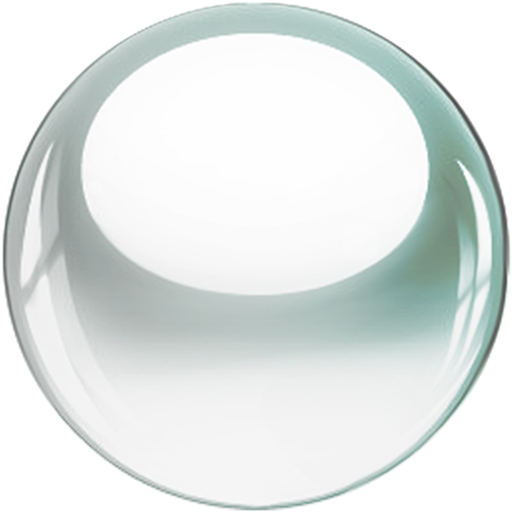


BABY SWIMMING EQUIPMENT
For our program, the following equipment is needed for infant swimming:
Supporting documents:
- Medical certificate from a pediatrician for the child and 1 ID photo (photo is optional).
- Medical certificate from a pathologist, dermatologist, or gynecologist for the mother.
- Medical certificate from a pathologist or dermatologist for the father.
(For medical certificates, we recommend that you contact the Agios Loukas clinic where there are special prices for our members.) Ask us!
Equipment for baby swimming:
- Reinforced swimsuit with double lining.
- Special waterproof diapers.
- Swimming cap and goggles (only for children over 3 years old).
- Non-slip flip-flops and a bathrobe or towel for companions and children.
- Child and parent cosmetics.
- Woolen hat for leaving the room.
- Swimming cap for adult companions who will enter the pool.
IMPORTANT QUESTIONS ABOUT BABY SWIMMING
What is baby swimming?
Swimming for infants and toddlers is a program of learning and developing skills in water, in the form of play. The program is aimed at infants and children aged 40 days to 3 years and their parents.
Is infant swimming appropriate for all babies?
Yes. Swimming is the first form of exercise recommended by all pediatricians in the world, not only to healthy children but also to children with medical problems, such as motor difficulties, asthma, etc. One of the most important advantages of baby swimming is the strengthening of the entire immune system. The only case in which the doctor may not recommend swimming is in infants who have skin diseases, such as an allergy to chlorine.
Is baby swimming suitable for all seasons?
Yes. All weather conditions are suitable for baby swimming, as the lessons take place in indoor pools. Both the pool (heated to 32 degrees Celsius) and the surrounding environment (cicadas chirp in our premises!) are at the ideal temperatures for children of this age. Imagine that in Russia - and not only - children participate in baby swimming programs with outside temperatures of up to -30 degrees Celsius! So, dare to do it too! And remember! We don't get sick from the cold, but from viruses.
Should the baby have walked first and then learned to swim?
No. Children who start baby swimming lessons at 40 days of age usually first learn to swim and then walk. Also, children who attend baby swimming lessons generally walk sooner than children who do not know how to swim, mainly due to their muscular and motor strengthening.
Is it safe to start at a young age?
Yes. The lesson is conducted under the supervision of experienced instructors, in indoor pools with warm water and low water level. The child is also accompanied by the parent, while the teacher who guides is always in the water. This program has been implemented for years abroad with great participation and success and there is no reason for concern. In addition, the lesson also includes some lifesaving exercises for both children and parents.
What is the appropriate age for a child to start baby swimming?
The earlier the baby starts (from 40 days), the better for his familiarization with the water. This is true not only because babies retain their reflex swimming movements outside the womb for a short period of time, but also because guidance from the instructor is easier for a 6-month-old child than for a two-year-old child. Generally, the most appropriate age is before 4-5 months when the baby still "remembers" the swimming movements he made in the womb. But later, of course, the child can benefit from the advantages of baby swimming, up to the age of 4 years.
How is the lesson?
The "Infant and Toddler Swimming" program creates an ideal educational environment with lots of fun and no pressure. The child is the guru, the parent the medium and the teacher the guide. All three compose a single harmonious unit that educates the toddler, protects his health and strengthens the parent-child relationship.
How many years have infant swimming lessons been held abroad?
Baby swimming programs began in the 1960s in the United States and expanded to Australia where they were further developed. In Europe, they are particularly popular in Germany and Finland.
How many years have infant swimming lessons been held in Greece?
In Greece, the first and most specialized club was founded in 2000 under the name “Hydria” in Athens. Nikolas Hadjigiakoumis (founder of the Ichthys swimming team) was the main coach of the Hydria club. Later, he was responsible for the entire program in 3 swimming pools in Athens, since the beginning of the club’s foundation, that is, for 15 years.
What do children learn with baby swimming and in how long?
Initially, it should be taken into account that each child is unique. Under no circumstances could we present a guaranteed and specific formula for performance. Each child has a different receptivity, will and inclination. Therefore, it is difficult to draw a single and overall conclusion about what exactly children learn with infant swimming in each period. However, we present below a table with the indicative results of each age, which is an approximate presentation of the skills they acquire:
Those who have the appropriate conditions and training can learn to hold their breath in the water after the specific signal. As many infants continue the practice, by the first year of their age they will be able to swim for 5 seconds between two adults, swim and be grabbed from the edge of the pool. At the same time, they will be able to make a short dive into the water from a sitting position at the edge of the pool. They will also begin to participate in songs and games and express their joy with smiles.
For families who are unable to attend all the lessons to fully benefit from baby swimming, it is recommended that they help their children become as familiar with the water as possible from an early age. This lays the foundation for good performance in future lessons. The child is guided in learning basic swimming skills, at a pace dictated by age abilities and receptivity. For example, a 6-12 month old infant can learn to hold his breath with his head in the water, as well as to float on his back. Also, the children's companions gain valuable information regarding safety and water education.
Those who have acquired the above skills with the necessary training and the right conditions can now begin to learn to dive from the edge of the pool and return to the edge of the pool. Toddlers who continue practicing until the age of 25 months significantly enhance their endurance, as well as their technique.
They will now be able to learn to surface for breath. Of course, learning this skill at such a young age can be considered excessive. We usually expect our young swimmers to start this effort on their own when they have developed enough of the ability to push themselves through the water to rise to the surface.
They will now begin to swim on their back. As they approach their fourth birthday, more and more children will swim on their back. More experienced toddlers will have the ability to alternate between back and front positions.

